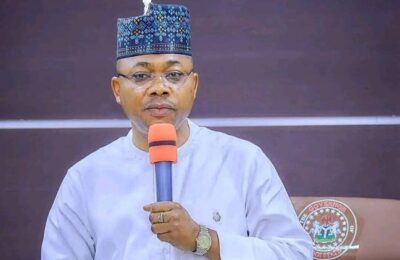Kogi Iron (ASX: KFE) has increased confidence in its Agbaja Iron Ore Project in Nigeria with a maiden JORC Indicated Resource estimate of 466 million tonnes at 41.4% iron.
Overall Resources at the project have also increased by 20% to 586Mt at 41.3% iron with potential for further growth given that just 20% of the prospective area within EL12124 has been drilled.
Agbaja benefits from established transport infrastructure, which includes barging along the Niger River to the sea port.
The company has also highlighted in late November the low strip ratios averaging 0.72 to 1 over 20 years – including a ratio of 0.42 to 1 in the first three years – that will minimise future mining costs
“The Updated Mineral Resource is an important milestone in Kogi’s vision to be an African iron ore producer. Of significance is the classification of 466 million tonnes of resources as Indicated,” managing director Iggy Tan said.
“Not only does this demonstrate an increased level of geological confidence in the Agbaja deposit, but it provides a solid platform upon which the company can continue to advance the current Scoping Study that is assessing the technical and economic viability of potentially producing 5 Mtpa of iron ore concentrate at Agbaja.”
He added that the Indicated Resource could provide enough material for more than 35 years of production at this annual rate.
“Considering Kogi Iron has drilled only 20% of the area prospective for channel iron mineralisation within EL12124 on the Agbaja Plateau, the potential scale of the iron mineralisation on the plateau should not be underestimated.
“The Indicated Mineral Resource, as it currently stands, clearly has potential to support an operation producing in excess of the 5 Mtpa scenario being contemplated in the Scoping Study.
“The average iron grade of 41.4% ranks Agbaja as one of the highest grade, beneficiable iron ore deposits in West Africa which we believe sets it apart from other projects.”
Resource Upgrade
The updated Resource, which is in accordance with JORC 2012 standards, was increased through both extensional and infill drilling as well as an improved understanding of the geology and mineralisation after further field work was completed in 2013.
The confidence in the geological interpretation is good with iron mineralisation being of a Channel Iron type flat lying deposit that is continuous and homogeneous.
This is aerially extensive across the Agbaja Plateau.
A total of 686 reverse circulation drill holes were drilled for 16,244 metres together with a total of 11 diamond drill holes were drilled for 233 metres.
Mining and Metallurgical Methods
It is currently considered that mined material will be crushed to around <10mm by a two stage crushing system.
The crushed material will be further milled, fed to a beneficiation plant and through a simple magnetic separation process, with a final upgraded iron ore concentrate to be produced.
Previously announced metallurgical testwork have demonstrated the recovery using the proposed flow sheet, optimising mass and iron recovery, and concentrate grade for the mineralisation.
Studies have identified, designed and developed material movement schedules for the Stage 1 and Stage 2 open pit mining area.
The Stage 1 mining area is about 6 square kilometres and is located west of the proposed processing plant site.
Targeting the magnetic fraction of the mineral resource, the average grade of material identified for mining is estimated at about 46% iron, with a corresponding strip ratio of approximately 0.68 to 1.
As currently designed this area should provide processing plant feed for an initial 14 years.
Stage 2 covers about 2.2 square kilometres to the east of the proposed plant.
Strip ratio is calculated at approximately 0.81 to 1 and the should provide feed for an additional 6 years, bringing the combined total plant feed from the two areas to 20 years.
The areas were selected to minimise estimated strip ratio and maximise exposure to the thickest portions of the higher grade magnetic Oolite zones of mineralisation.
Logistics
Agbaja benefits from established transport infrastructure.
Ore will be transported by slurry pipeline about 20 kilometres to the Banda Barge facility where it will be transported by 3,000 tonne river barges along the Niger River to a proposed transhipment facility at Port Warri for export.
Potential also exists for rail transport of ore as there is an established under-utilised railway to Port Warri that would require a 59 kilometre spur line to access though this is beyond the scope of the current Scoping Study.
Analysis
Shares in Kogi Iron should open higher today with the resource upgrade for its Agbaja Iron Ore Project highlighting its potential for development as well as the scale of the Resource on the Agbaja Plateau.
With just 20% of the prospective area drilled, there is room for further resource upgrades with more exploration and drilling.
The company has already mapped out Stage 1 and Stage 2 open pits with low stripping ratios that would minimise future mining costs along with a 20 year mine schedule that gives the project a high level of mine life certainty.
Processing further highlights the low cost of the project with just simple magnetic separation required to beneficiate the ore while the Nigerian government is also known to have given Agbaja a strong endorsement.
Other catalysts include the Scoping Study, which is scheduled for completion in the first quarter of 2014.




